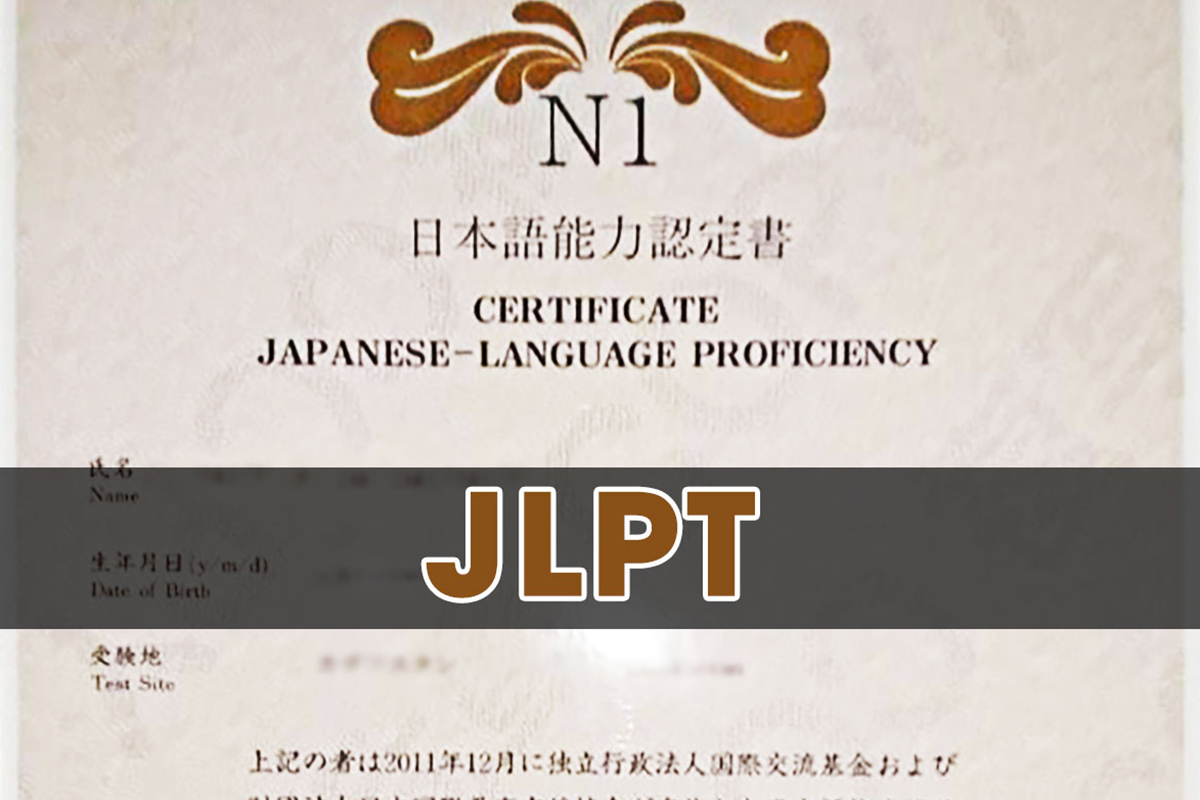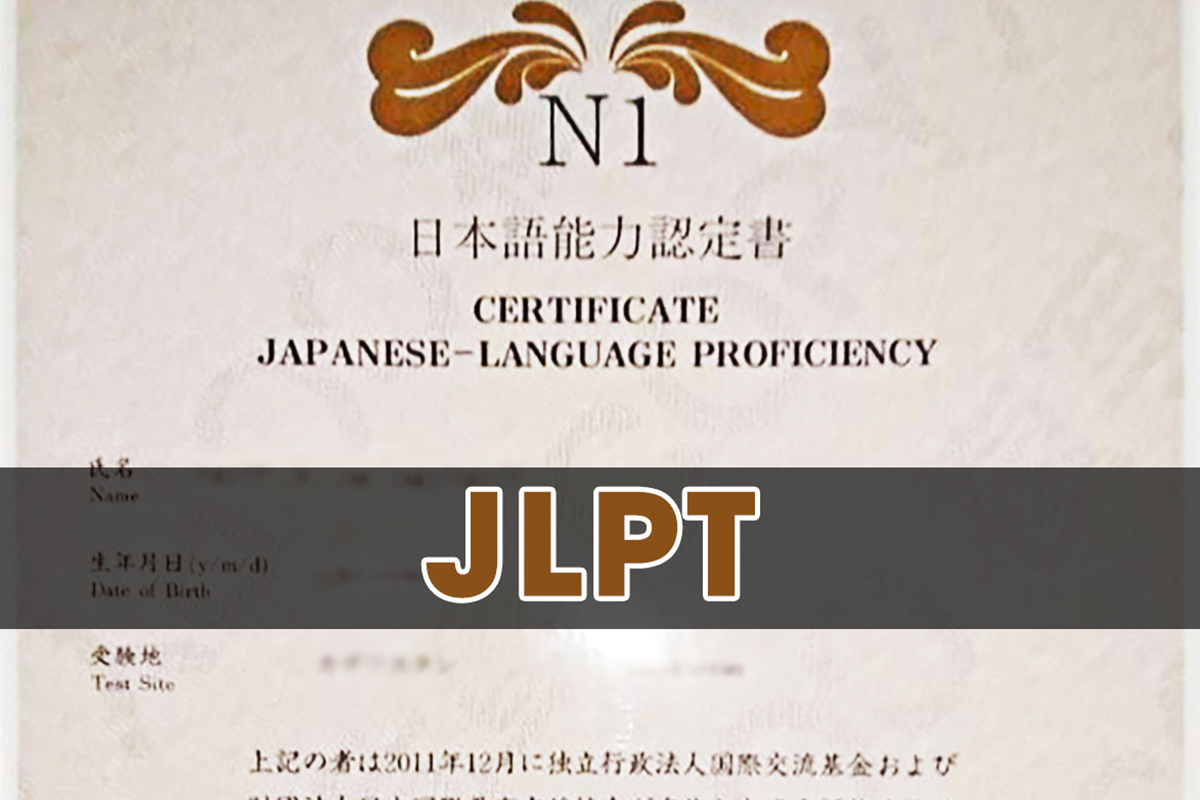Trying to pass language exams is always a painful experience. I managed to take and pass the JLPT N1, which is the highest level. It wasn’t easy, but I succeeded. If you are interested in trying JLPT, you must know how to be prepared for the JLPT in order to succeed. The JLPT is quite special because there is no oral section. So even though one may speak Japanese fluently, they may not succeed the JLPT. However through my working life in Japan for over 4 years, I’ve learned you have to face the JLPT N1 especially if you want to work for the long term in a Japanese firm.
In this article, I will summarize theoretical information about the Japanese Language Proficiency Test (JLPT/ or Nihongo Nouryoku Shiken = 日本語能力試験) and give some practical advice on how to succeed in the JLPT, as well as in learning the Japanese language in general.
WHAT IS THE JLPT?
So, first of all, what is the Japanese Language Proficiency Test (JLPT)? Here is a brief outline. The Japanese-Language Proficiency Test (JLPT) is a test to evaluate and certify proficiency in the Japanese language of non-native speakers.
The JLPT is offered in five levels (the easiest N5 to the hardest N1), with “Vocabulary”, “Grammar”, “Reading” and “Listening” sections for each level. As I mention above, JLPT does NOT include sections to measure “Speaking” or “Writing” proficiency directly.
The JLPT certificates do not expire or become invalid over time. Therefore, once you succeed and get a certificate, you can be at peace forever.
A little bit of JLPT history.
The JLPT started in 1984 under the joint organization of the Japan Foundation and Japan Educational Exchanges and Services (previously Association of International Education, Japan). In the first year, the JLPT was conducted in 15 countries, and approximately 7,000 examinees took the test. Since then, the JLPT has become the largest Japanese-language test in the world, with approximately 610,000 examinees in 62 countries and areas worldwide in 2011.
IS THE JLPT IMPORTANT? ANY ADVANTAGES?

The JLPT certificate is very important, especially if you are planning to study or work in Japan. Not only will the JLPT certificate (especially N1 or N2) give you some benefits, but it also may be REQUIRED depending on where you want to study or work. As said on the JLPT official website,
JLPT certificates offer various advantages, ranging from recognition as academic credit and graduation certification at schools to preferential treatment at companies and acknowledgment of qualification in society.
In other words, if you are planning to study or work in Japan, or work in a Japanese company in your own country, the JLPT certificate may give you some points, though depending on a field of work or study in Japan, the highest levels (N1 or N2) are required. I’ve been here in Japan for 4 years and all I learn from my experience in Japanese society is in competitive situations, N5 or N4 offer almost no benefits.
One of the examples where the JLPT N1 or N2 certificate can help you,Those who pass JLPT N1 receive 15 points, N2 receive 10 points under the government’s “Point-based Preferential Immigration Treatment System for Highly Skilled Foreign Professionals.” Individuals with a total of 70 points or higher receive preferential treatment at immigration.
For more details, check out the website of the Immigration Bureau of Japan.
Because Japan is still a closed country in a way because of limited immigration, if you want to work in Japan, you need to pass some benchmarks which Japanese government ask.
According to a survey that was held by the Japan Foundation in December 2017 among overseas applicants in 76 countries “What is your reason for taking the JLPT”, about 33% replied “useful for work or will be useful to attain employment, salary increase or promotion in own country / in Japan”. Another about 25% of the answers were “necessary for admission into university or as a proof of proficiency for other educational institution in own country / in Japan”.
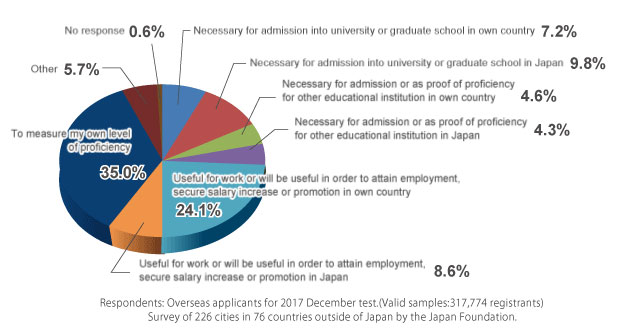
A little from my own experience in Japan.
I know some foreigners living in Japan who couldn’t get a job in some companies ONLY BECAUSE they didn’t have the highest N1 level, despite their Japanese skills being good. In fact, they have the N2 Certificate, and as they were told in the interview: “Your Japanese is quite good, why don’t you have the JLPT N1 certificate?” Hard to accept but I need to emphasize that there IS a huge difference between JLPT N1 and N2.
LEVELS OF JLPT
As I have mentioned above, the JLPT is offered in five levels: N1, N2, N3, N4, N5, where N5 is the easiest, and N1 is the most difficult one.
In order to measure Japanese-language proficiency as thoroughly as possible, test items are designed for each level.
N4 and N5 measure the understanding of basic Japanese that is mainly learned in class. N1 and N2 measure the understanding of the Japanese used in a broad range of actual everyday scenes. N3 bridges the gap between N4/N5 and N1/N2.
How long will it take you to reach each level? Here are some approximate data (minimum is the minimum for those with kanji knowledge, maximum is the maximum for those who don’t use kanji in their native language).
N5 – 250~600 hours = 10~25 days
N4 – 400~1000 hours = 16~42 days
N3 – 700~1700 hours = 29~ 71 days
N2 – 1150~2800 hours = 47~117 days
N1 – 1700~4800 hours = 70~200 days
As for my own experience, I started learning Japanese at University in 2007. At that time there were only 4 levels in the JLPT.
*The JLPT has changed to 5 levels since 2010. Before that the gap between the N3 and N2 was too huge, so the N2 was split into N3 and N2.
I had Japanese language classes every day – five days per week 2~3 hours each class (except for winter-summer holidays), and I passed the N3 (which is equivalent to N4 now) after 2 years of studying (about 1000 ~ 1200 hours).
However, after 3 years of studying Japanese, which was about 1800~2000 hours, I failed the N2 once. I would have felt very upset but I passed another test at the university that let me have a 1-year internship at a Japanese university; there was a relationship between the Japanese university and my university. After coming back to my home university from the 1-year studying abroad in Japan I applied for the N1 and succeeded. By the way, in the Japanese university, I had an intensive Japanese language courses every day that included writing, reading, listening, speaking and kanji.
My conclusion: you can pass N5 ~ N3 levels only by studying in classes, but for N2 ~ N1 you need more language experience. I had a good opportunity to get that experience in Japan among the Japanese people, but if you cannot have it – then read and listen.
We will talk more about tips on how to reach a good level in the Japanese language later.
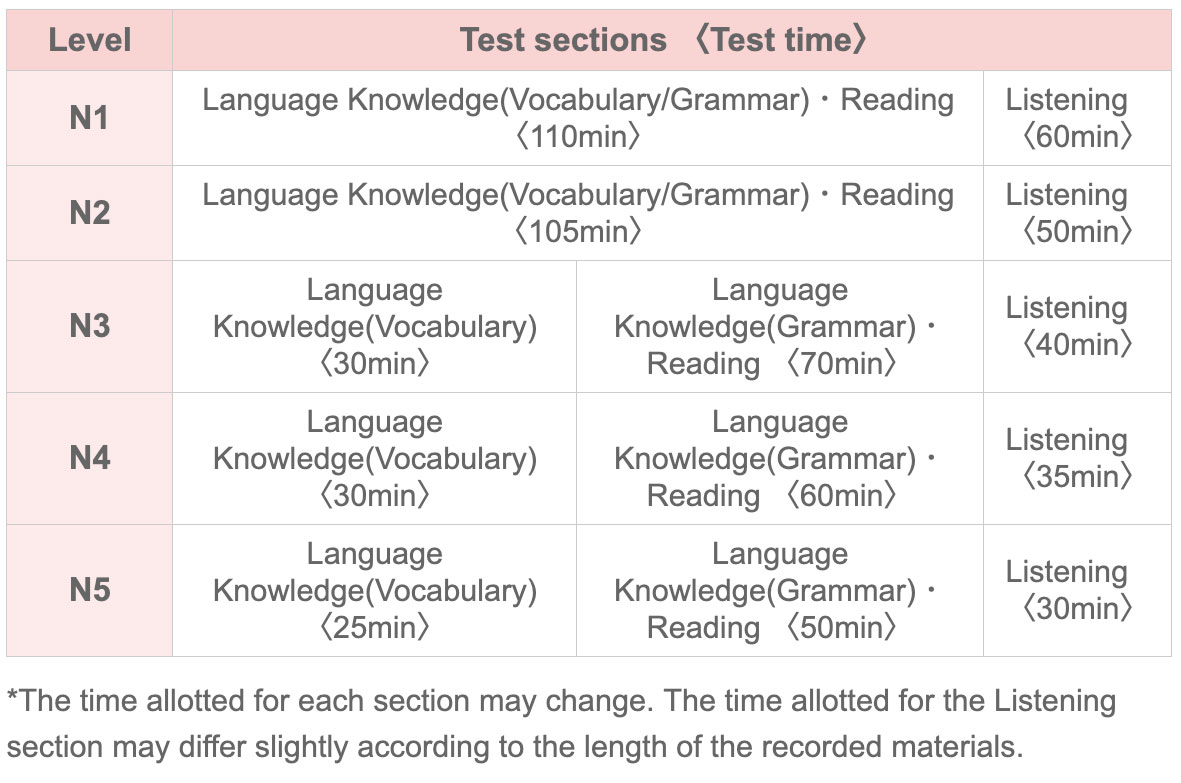
JLPT N5

For the N5 you need the ability to understand some basic Japanese.
・One is able to read and understand typical expressions and sentences written in hiragana, katakana, and basic kanji.
・One is able to listen and comprehend conversations about topics regularly encountered in daily life and classroom situations and is able to pick up necessary information from short conversations spoken slowly.
Test time (may change).
- Vocabulary 25 minutes
- Grammar, Reading 50 minutes
- Listening 30 minutes
On the official web site of JLPT, you can try an N5 test!
JLPT N4

For the N4 you need the ability to understand basic Japanese.
・One is able to read and understand passages on familiar daily topics written in basic vocabulary and kanji.
・One is able to listen and comprehend conversations encountered in daily life and generally follow their contents, provided that they are spoken slowly.
Test time (may change).
- Vocabulary 30 minutes
- Grammar, Reading 60 minutes
- Listening 35 minutes
On the official web site of the JLPT, you can try an N4 test!
JLPT N3

For the N3 you need the ability to understand Japanese used in everyday situations to a certain degree.
・One is able to read and understand written materials with specific contents concerning everyday topics.
・One is also able to grasp summary information such as newspaper headlines.
・In addition, one is also able to read slightly difficult writings encountered in everyday situations and understand the main points of the content if some alternative phrases are available to aid one’s understanding.
・One is able to listen and comprehend coherent conversations in everyday situations, spoken at near-natural speed, and is generally able to follow their contents as well as grasp the relationships among the people involved.
Test time (may change).
- Vocabulary 30 minutes
- Grammar, Reading 70 minutes
- Listening 40 minutes
On the official web site of JLPT, you can try an N3 test!
JLPT N2

For the N2 you need the ability to understand Japanese used in everyday situations, and in a variety of circumstances to a certain degree.
・One is able to read materials written clearly on a variety of topics, such as articles and commentaries in newspapers and magazines as well as simple critiques, and comprehend their contents.
・One is also able to read written materials on general topics and follow their narratives as well as understand the intent of the writers.
・One is able to comprehend orally presented materials such as coherent conversations and news reports, spoken at nearly natural speed in everyday situations as well as in a variety of settings, and is able to follow their ideas and comprehend their contents. One is also able to understand the relationships among the people involved and the essential points of the presented materials.
Test time (may change).
- Vocabulary, Grammar, Reading 105 minutes
- Listening 50 minutes
On the official web site of JLPT, you can try an N2 test!
JLPT N1

For the N1 you need the ability to understand Japanese used in a variety of circumstances.
・One is able to read writings with logical complexity and/or abstract writings on a variety of topics, such as newspaper editorials and critiques, and comprehend both their structures and contents.
・One is also able to read written materials with profound contents on various topics and follow their narratives as well as understand the intent of the writers comprehensively.
・One is able to comprehend orally presented materials such as coherent conversations, news reports, and lectures, spoken at natural speed in a broad variety of settings, and is able to follow their ideas and comprehend their contents comprehensively. One is also able to understand the details of the presented materials such as the relationships among the people involved, the logical structures, and the essential points.
Test time (may change).
- Vocabulary, Grammar, Reading 110 minutes
- Listening 60 minutes
On the official web site of JLPT, you can try an N1 test!
Again, a little from my Japanese experience.
I have been living and working in Japan for more than 4 years now. I use Japanese every day, I have to read and watch the news, write articles etc. But I barely use or see expressions and grammar structures that were given in N1 level. What I want to say – it was really difficult. In N1 there are many abstract expressions that have several meanings, many kanji and vocabulary that have close but a little bit different meaning.
Recently I tried all sample questions from N5 to N1, just to see how I would solve it now. N5 to N2 was a piece of cake, but in N1 I had some troubles with grammar and kanji, though the listening section occurred to be quite easy.
WHAT’S THE PROCEDURE FOR APPLYING THE JLPT?

The JLPT is held two times a year: usually, on the first Sunday of July and on the first Sunday of December. Though, outside Japan, the test may be held only in July or December in some cities.
Test Fee: 5,500 yen (about 50 USD), consumption tax included.
With regards to the procedures of the JLPT, taking it in Japan or overseas are not the same so please check those procedures below.
JLPT PROCEDURE IN JAPAN
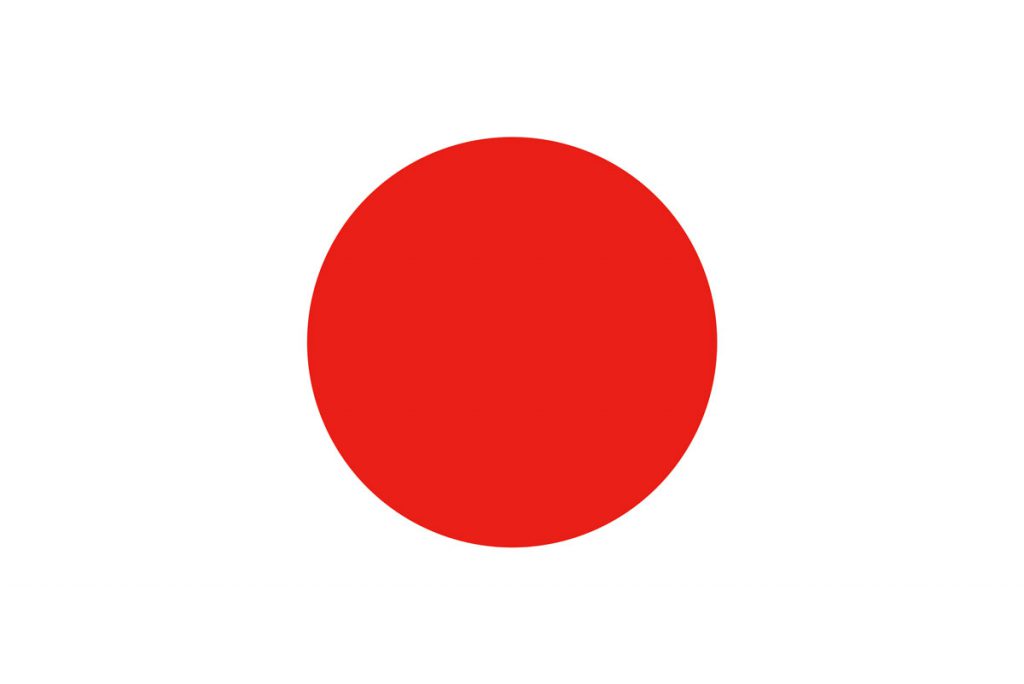
If you want to take a JLPT test in Japan, here are steps for preparing for the JLPT.
- Check test date on the Japan Educational Exchanges and Services (JEES) website for the first test (July) in early February, and for the second test (December)-in early July.
- Sign up for MyJLPT on the JEES website where you can register at any time, or obtain a test guide (Application Forms) at the bookstore, from mid-March for the July-test, and from mid-August for the December-test.
- Apply via the JEES website and pay the application fee, or read Test Guide, fill in the application form, pay the registration fee and mail to the JLPT Application Center, in April for the July – test, and in September for the December-test.
- Receive a test voucher from JEES, in mid-June for the July-test, and in mid-November for the December-test.
- Finally, take the JLPT test, in early July, or early December.
- Receive test results from JEES, in early September if you took the JLPT in July, and in early February-if you took the JLPT in December.
All examinees in each level will receive a Score Report. Successful examinees will receive a Certificate of Proficiency. Examinees who applied for the test via the Internet can view test results by logging on to MyJLPT
JLPT PROCEDURE IN OVERSEAS

Below is the general process for applying the JLPT in overseas. Details may differ by country/area, so you should check the details at your local host institution.
- Find a country/area where you can take the test, your local host institution, and test site city and contact your local host institution for details.You can check a list of localhost institutions and test site cities here.
- Confirm the registration method with the local host institution, obtain the JLPT Test Guide (Application Forms) there, and check it carefully. Note, that the application period varies by city.
- Pay the registration fee, for the July-test around March – April, and for the December-test-around August-September.
- Receive JLPT the test voucher from the local host institution.
- Take the JLPT test (in early July or early December).
- Finally, receive JLPT test results from the local host institution. If you took the JLPT in July, the results will be there around September, if your JLPT was in December – then wait for the results around March.
All examinees in each level will receive a Certificate of Result and Scores. Successful examinees will receive a Certificate of Proficiency.
WHAT SCORES DO I NEED TO PASS A JLPT TEST?
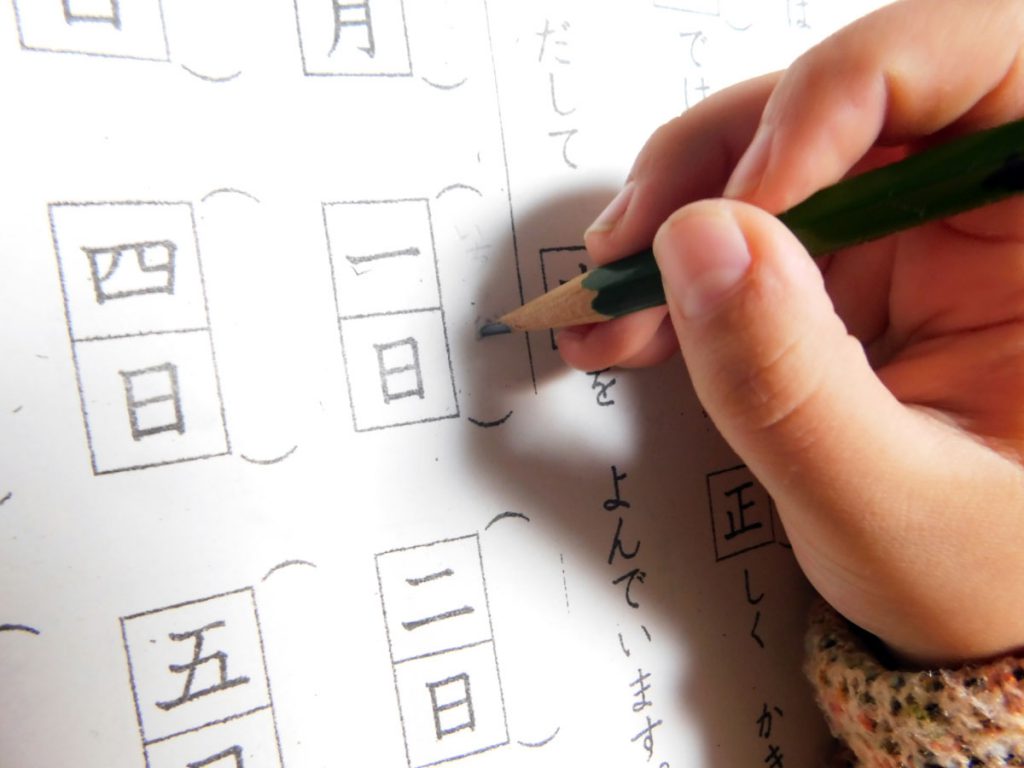
The total score for each level is 180. N1, N2 and N3 have three scoring sections with a maximum score 60 for each: “Language Knowledge (Vocabulary/Grammar)”, “Reading” and “Listening.” N4 and N5 have two scoring sections: “Language Knowledge (Vocabulary/Grammar)&Reading” with a maximum score 120, and “Listening” with a maximum score 60.
In order to pass the JLPT and get the Certificate of Proficiency you need to clear 2 things:
- The total score needs to be at or above the point required for passing (overall pass mark)
- The score in each scoring section needs to be at or above the minimum point required for passing (sectional pass mark).
If there is even one scoring section where the score is below the sectional pass mark, examinees are determined to have failed, no matter how high the total score they might have.
Scoring sections of N5-N4 and N3-N1 are different. Overall pass marks and sectional pass marks for each level are below.
TO PASS JLPT N5
1. Overall pass mark: 80 points
2. Sectional pass marks: Language Knowledge (Vocabulary/Grammar)&Reading – 38 points, Listening – 19 points
TO PASS JLPT N4
1. Overall pass mark: 90 points
2. Sectional pass marks: Language Knowledge (Vocabulary/Grammar)&Reading – 38 points, Listening – 19 points
TO PASS JLPT N3
1. Overall pass mark: 95 points
2. Sectional pass marks: Language Knowledge (Vocabulary/Grammar) – 19 points, Reading – 19 points, Listening – 19 points
TO PASS JLPT N2
1. Overall pass mark: 90 points
2. Sectional pass marks: Language Knowledge (Vocabulary/Grammar) – 19 points, Reading – 19 points, Listening – 19 points
TO PASS JLPT N1
1. Overall pass mark: 100 points
2. Sectional pass marks: Language Knowledge (Vocabulary/Grammar) – 19 points, Reading – 19 points, Listening – 19 points
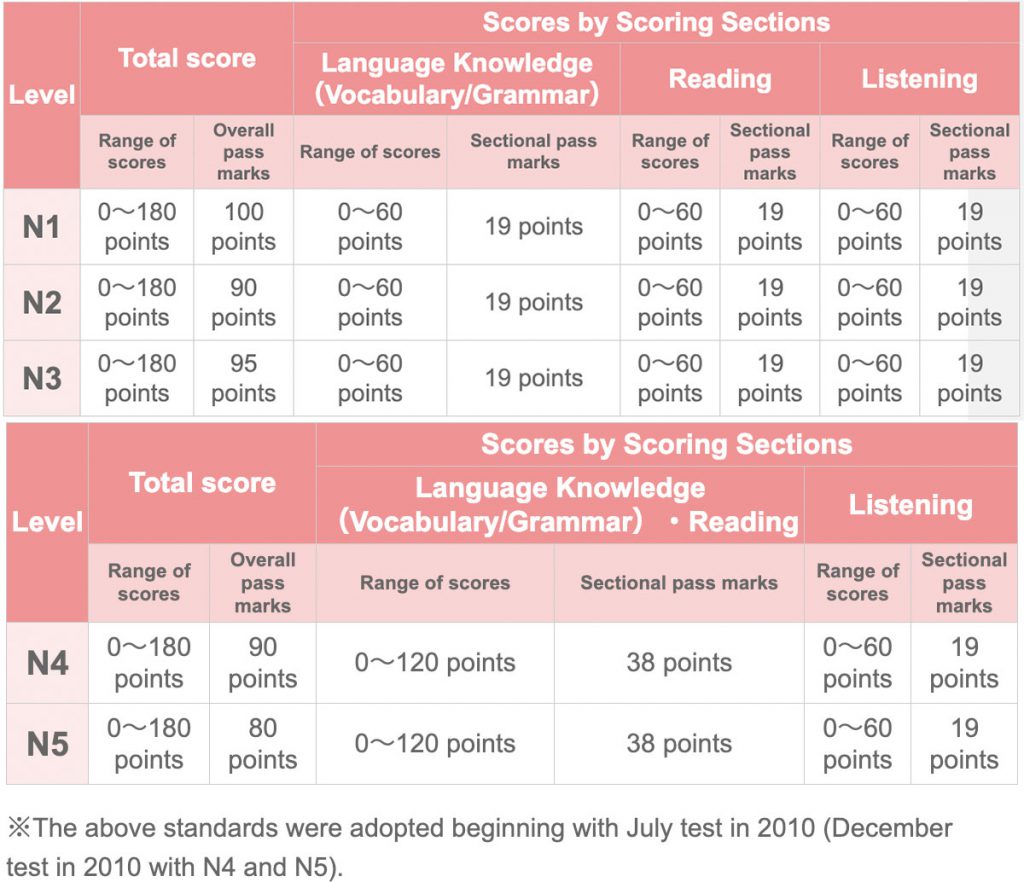
Examinees will be judged to have failed if they miss a test section. Although they will receive a Score Report, it will not show scores for any test section, including those that have been taken.
TIPS ON HOW TO PASS THE JLPT

So how should you prepare for the JLPT?
First, build the basics.
In Japanese, there is a proverb which is used in daily life.
千里の道も一歩から
=A journey of a thousand miles begins with a single step
STEPS OF LEARNING JAPANESE FOR JLPT
Let us start from the very beginning: what are the steps to learn the Japanese?
I consider that there are two important things: being systematic and patient (which I guess is not only about learning Japanese)
- Grammar. For any language, the basis is GRAMMAR (after its alphabet, of course). This is where you start. Learn the structure of Japanese, how to construct the sentences, how to use the language correctly.
- Kanji and Vocabulary. Write a lot. Learn words starting from simple daily things, going deeper to more difficult ones and write them down.
- Reading. Read a lot – simple stories, articles, news, whatever.
- Listening. Watch anime, dramas, movies, news, listen to songs, check the lyrics for your favorite songs and try singing.
- Finally, Speaking. If you have the opportunity to talk to native speakers – use it as much as you can. Listen carefully how the Japanese people speak and try to copy – thus you can learn how to speak more naturally.
If you don’t know any native speakers – start with dialogues from books. This is what we were doing on our Japanese classes – we had homework to learn dialogues by heart, and during the lesson, students would talk to each other changing roles. I found this quite effective. Also, you can think of your own dialogues on different topics and learn them too.
MY RECOMMENDED TEXT BOOK FOR STUDYING JAPANESE

By the way, the books that we had in our classes is “Minna no Nihongo”. It has good materials and was quite easy to work with, so this is my recommendation for the start.
Thus, we built the basics.
STEPS OF PREPARING FOR JLPT TEST
Now let us get to the JLPT!
Here are tips how you can mange for the JLPT.
- Get proper books and prepare.
- Practice for the test using sample questions from the JLPT official site, and using books with mock questions. Try to get your strategy for the test: what section should you start with – grammar, kanji, vocabulary or reading? How much time does every section take?
- Practice managing your time – a very important one. The time that you have for one question depends on the level that you take, but approximately it will be 1~2 minutes per question. The vocabulary and kanji sections probably will not take more than 20 seconds (because it is either you “know” or “don’t know”). For the reading section you will definitely need more than 2 minutes – it will take most of your time.
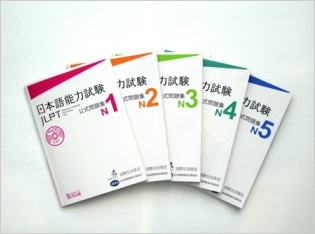
There are recommendations on the JLPT official site: Nihongo Nouryoku Shiken Koushiki Mondaishuu (日本語能力試験公式問題集/JLPT Official Practice Book) for each level published by the Japan Foundation and Japan Educational Exchanges and Services.
Here are some other recommendations from those who have passed: Nihongo So-matome (日本語総まとめ/series for different sections for each level), Shin-kanzen master (新完全マスター/series for different sections for each level), Shin-Nihongo 500-mon (新にほんご500問/for each level).

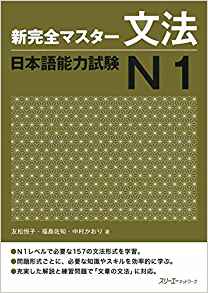
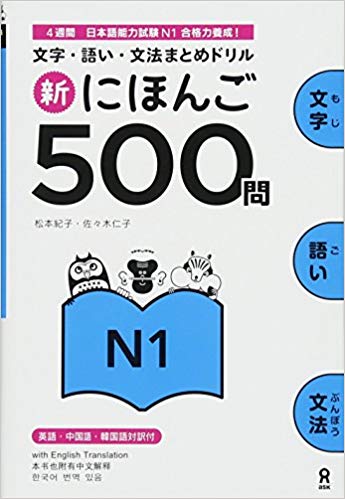
“I, A JAPANESE TELL YOU TRICKS TO FIND THE ANSWER”

A Japanese girl who has come to tell you some tricks to help you succeed on your JLPT exam. I myself passed thousands of exams as a Japanese, and failed some… At the end, through those experiences, I’ve learned one important thing: How test creators aim to create said test. In a way, trying to trick us into picking the wrong answer is really important in their test making strategies
Below, I will share my ideas to give you hints in order for you to improve the odds of finding the right answer. Those are not fail-safe methods! Do not rely on them to pass. Life is not that simple. However, in cases where you have no clue what the correct answer is, it can help a lot, other than relying on random guesses. These may end up being the one last point that got you to pass the JLPT.
1. This idea was from another book but when you are at a question, after before the text, first look through the answers and find the answer which is looks way too obvious to be true.
Like “We cannot live alone so we need to help each other.”, “We need to respect each individuality.” etc. These ideas are too obvious therefore it may not be an answer.
Put ○, ?, or !?(=What’s the hell!?) for each answer BEFORE reading a text. In my opinion, ? could have more possibility to be the correct answer. Also when you read one of the answers and feel “What’s the hell?” it’s hardly every the correct answer.
This is an example from the official website of JLPT.

In English,
Question: What does the author want to say the most?
N1. Medical staffs without actual practice should be relieved from their work.
N2. Not to make medical staffs unhappy, general people should have medical knowledge.
N3. As same as art, medical workers need patients who have the knowledge to be able to judge whether their medical care was good or bad.
N4. Bad performance and not good art is the same as the medical accident at the hospital
Just check the answer and we can see that N.1 answer is super correct and therefore it’s not the answer. For me, N.4 is “:O !?!?!?!?” If I were you, I check ○, ?, ?, !? Once you check answers, please start reading the text.
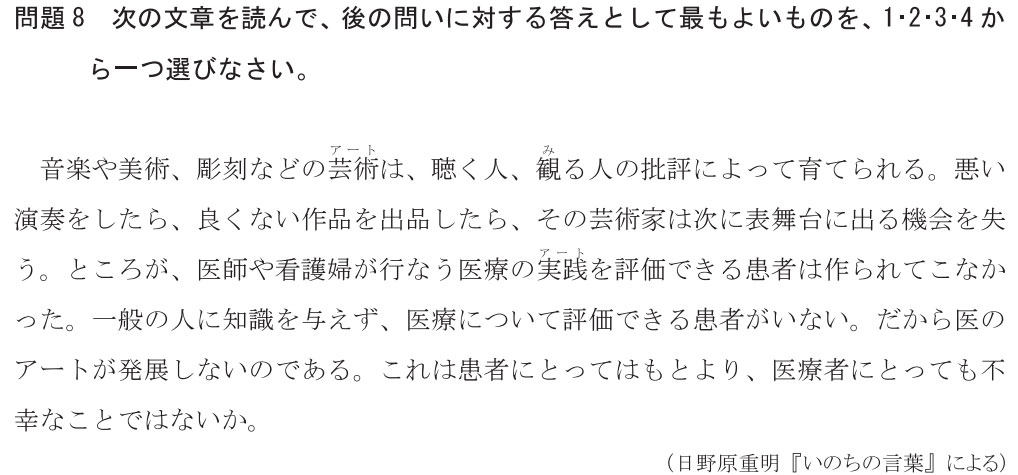
The answer is No.3.
2. I found that sometimes questions seem to be either !? and ○.
No need to say, the answer should be ○. Here is the example from the official website of JLPT. Like before, let’s check out the answers first!

In English,
Question: why the author thinks “It seems like a machine”?
N1. Because even though we cannot work hard if the salary decreases, productivity is the same as a machine.
N2. A human can achieve such a tough task with strong esprit, they can be as strong as a machine.
N3. As a machine, a human won’t break easily even if he/she works a bit too much.
N4. A human can be broken if he/she works too much so at this point it’s the same as a machine.
I check !?, !?, ○(positive), ○(negative) but if I were you, I choose N.4 and in fact, the answer was correct. Why did I choose it? Because N.3 was positive and N.4 was negative. This is just my idea but talking about texts of the exam, they tend to contain critical problems that authors want to emphasize. Therefore I think the happy positive answer may not often be the correct answer.
Following questions too,

In English,
Question: What does mean by “More and more a human treat human as a human, an inhuman increase“?
N1. Thinking that a human can overcome if he/she does and force him/her with unreasonable.
N2. A human wouldn’t lose humanity even though he/she tries to work like a machine
N3. A human can increase productivity and humanity if he/she keeps working.
N4. A human can increase productivity like a machine if he/she works hard.
I check ○(negative), !?, !?, !?. For this question, we don’t even need to read the text to find the answer. A big hint is that the phrase “More and more a human treat humans as a human an inhuman increase” is very negative so the answer cannot be positive.
Next,

Question: The author said, “How about following the example of the machine?”. Which answer does show the author’s idea the most?
N1. Working without rest like a machine, a human can overcome any difficulties.
N2. As a machine, we shouldn’t care about humanity and spirituality.
N3. Why not a human wouldn’t be broken even though he/she works hard like a machine and increase productivity?
N4. Like a machine, a human should recognize that he/she cannot do impossible things.
I check !?, !?, !?, ○. This question is super easy IF you can understand the meaning of the answers. Again, we don’t even read the text to answer. A big hint was the phrase “How about following the example of the machine?” is ironic so the answer cannot be happily ever after, you know?
Here is the text,
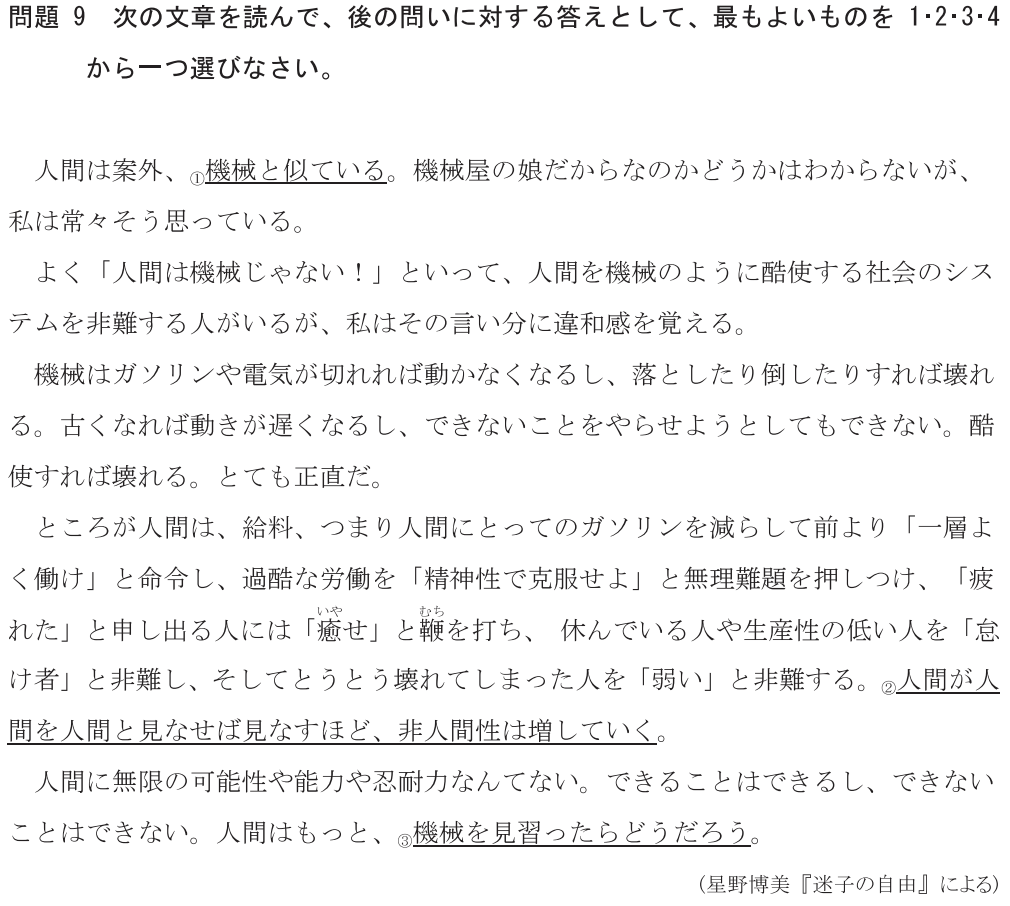
3. For the kanji reading section, if you cannot read a kanji, just check the hiragana (読み仮名). Some hiragana’s meaning don’t fit at all so say goodbye to them.
This is an example from the official website of JLPT,

If you know the hiragana’s meaning, you can definitely say goodbye to N.3!
Again, I cannot say that my ideas can be used for every situation but I hope it could be helpful when you are lost! Good luck! 頑張って by Mona
BRING A WATCH, PENCILS AND ERASERS

Please don’t forget a watch, pencils and erasers! You will need to manage your time during the test.
GET READY FOR JLPT

So, let us simply summarize the steps that you take for the JLPT.
- Start with the basics: grammar, vocabulary, kanji.
- Read a lot. Listen a lot. Speak a lot.
- Decide the JLPT level that you want to challenge.
- Check the schedule of the JLPT and apply.
- Get proper books and start preparing for the test.
- Take practice tests and learn to manage your time. Practice a lot.
- Don’t forget to bring a watch and pencils on the test.
- Take the test and get your Certificate of Proficiency ?
Again studying for JLPT, especially for N1 is pretty tough but even I could pass it so why not you? JLPT N1 may seem far away from you but keep trying!
FREQUENTLY ASKED QUESTIONS ABOUT THE JLPT
I‘ve got some questions about JLPT so I share them here. Hope it could help you guys!
And if you have any other question, let me know in comment box ?
Q. CAN I FIND REAL PREVIOUS JLPT EXAM SAMPLES FOR PRACTICE?
Unfortunately, the past tests are not published, so you have to check the mock questions on the official JLPT site.
Q. KANJI FOR JLPT IS VERY LIMITED. HOW CAN I FIND WHICH KANJI HAVE THE HIGHEST PROBABILITY TO BE ASKED FOR THE EXAM?
Talking about kanji, unfortunately, there is no official list for the JLPT. Here is an approximate number of kanji to know for each level:
- N5 – about 120 kanji
- N4 – about 300 kanji
- N3 – about 650 kanji
- N2 – about 1150 kanji
- N1 – about 2140 kanji
Also, there are some sites that can be helpful: – https://jlptstudy.net/
This site has for some materials on learning kanji, vocabulary, grammar, and reading, for N5 to N2 – https://www.kanshudo.com/collections/jlpt_kanji
The site has the lists of kanji based on past JLPT tests. Also, it seems to have some other tools for mastering Japanese, but you need to register to use it fully.
Q. HOW CAN I KNOW WHICH JLPT LEVEL TO TAKE?
I think you can simply take some sample tests on the JLPT website to know your level.

